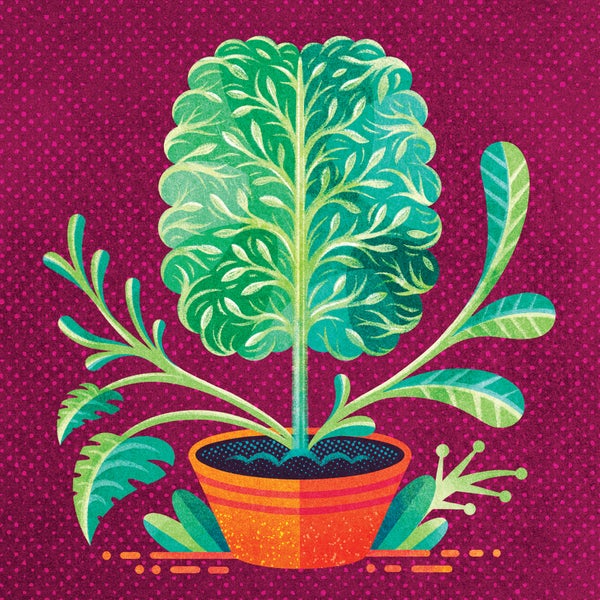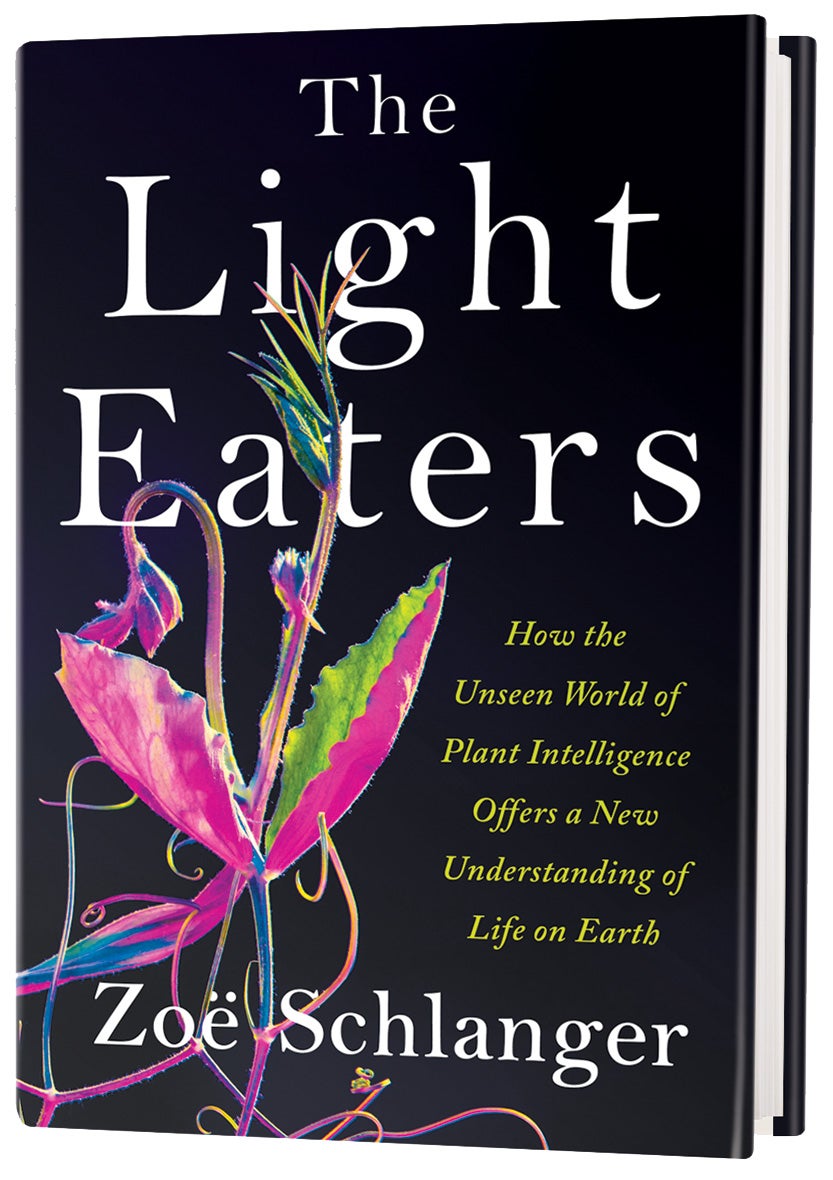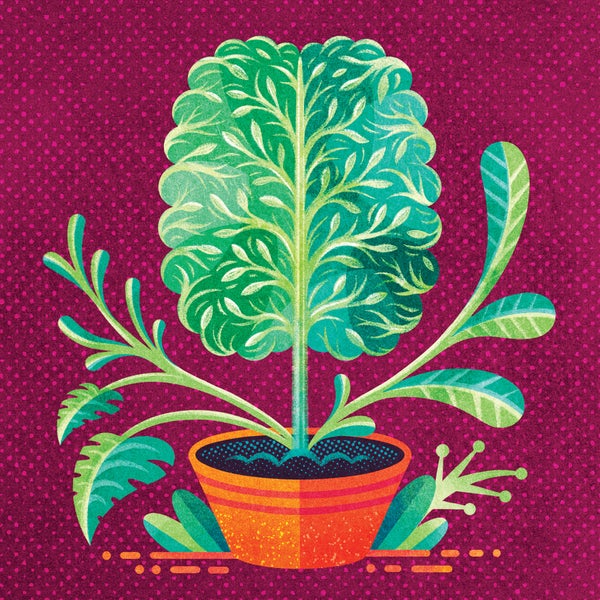How Plant Intelligence Can Soothe Climate Anxiety
In a new book, the wisdom of plants is a balm for our changing planet

NONFICTION
The Light Eaters: How the Unseen World of Plant Intelligence Offers a New Understanding of Life on Earth
by Zoë Schlanger.
Harper, 2024 ($29.99)
For a species entirely dependent on plants for food and a livable planet, we give plants curiously little respect. Museums and nature documentaries usually relegate them to the background, mere scenery for the action of animal evolution. This is an ancient bias. Less than 1 percent of European Paleolithic cave paintings feature plants. If you’re a plant disdainer, The Light Eaters, a stunning book on recent discoveries in plant biology by journalist Zoë Schlanger, will transform how you see not only plants but the nature of all life. And if you are already convinced that plants are fascinating and important, it will deepen your appreciation.
On supporting science journalism
If you’re enjoying this article, consider supporting our award-winning journalism by subscribing. By purchasing a subscription you are helping to ensure the future of impactful stories about the discoveries and ideas shaping our world today.
Plant “intelligence” is a controversial idea among biologists. Shoddy but widely reported experiments in the 1970s claimed to show humanlike behaviors in plants, such as enjoying Beethoven and responding to polygraph tests. Scorn for this New Age froth meant that, until relatively recently, studies of animal-like qualities in plants were taboo among respectable plant scientists. Now scientific discoveries have reignited debate. Through Schlanger’s careful reporting, we come to understand multiple perspectives rather than being bullied into one camp or another. Schlanger believes plant biology is a “case study” of a scientific revolution in progress. Conflict among competing ideas is, she shows, a necessary part of paradigm change.
Curiosity drives Schlanger’s narrative. Do plants sense a wound? We feel her excitement and hesitation as she uses tweezers to pinch a cress leaf. The plant has been genetically modified so that its cells glow when electrical charges pass through them. She is too hesitant with the tweezers at first, then presses hard. The leaf immediately lights up, “veins blazing like a neon sign.” A wave of electrical activity moves through the cress at a millimeter per second until the entire plant is suffused with information about the damaged leaf. The parallels to human pain are visually obvious. Technology paves the way to empathy. As a gardener and cook, I yank and slice plants many times every day. Through Schlanger’s vivid writing, I now understand these plants as living beings that respond to danger on the scale of seconds. I am, as Schlanger writes of her own changed perspective, “regaining material intimacy with the natural world.”
Should I feel guilty or stop gardening? Hardly. We’re animals, so we must eat light indirectly by chomping on plants or on animals that once ate plants. Waves of electrical activity in plant veins are not the same as nerve impulses flowing from animal pain receptors. Biologically and ethically, slicing cabbages differs from cutting animal flesh. Yet an anesthetic can quiet a cabbage’s electrical signals just as it does an animal’s nerves.
The question of plant consciousness looms in the background of these intriguing findings. Wisely, Schlanger points out that we know little about the neural basis of consciousness in animals, let alone in nerveless plants. But her visits to field sites and labs leave no doubt that, conscious or not, plants sense their surroundings and make sophisticated decisions. Leaves pick up the sounds of chewing caterpillars and mount appropriate chemical defenses. Flowers sweeten their nectar when they sense pollinators flying by. Flowers and bees sense one another through ever shifting electrical fields. Plants seem to use memory to adjust their growth and even minute-by-minute presentation of pollen.
The scientific study of plants has advanced to the point where we could drop the quotation marks from plant “intelligence” without fear of veering toward pseudoscience. We must also, though, acknowledge plants’ wondrous otherness. Plants sense, remember and make decisions throughout their bodies, in contrast to our primarily brain-centered intelligence.
A personal journey motivates the book and gives it ethical heft. After six years of writing about climate change, Schlanger felt that a “crawling sense of dread threatened to eclipse me.” To counter this darkness, she sought stories that “felt wonderful and alive,” a quest that led her to plants. Sustained at home by the “satisfying plant drama” of clambering vines and unfurling leaves, she also found pleasure and solace in the latest botanical scientific discoveries. Reading about her pursuit of plant wonder, I felt a growing sense of admiration for plants and kinship with their lives.
This shifted perspective is at the core of the paradigm change that Schlanger explores. Understanding plants’ intelligence reframes our everyday experience of eating plants or seeing them growing out of a crack in the sidewalk. In an age when we often feel alienated from a living world in crisis, it is good to be reminded that other species have agency and acumen. Plants have thrived on Earth for half a billion years. They embody not only intelligence but wisdom about how to flourish in the face of change.


